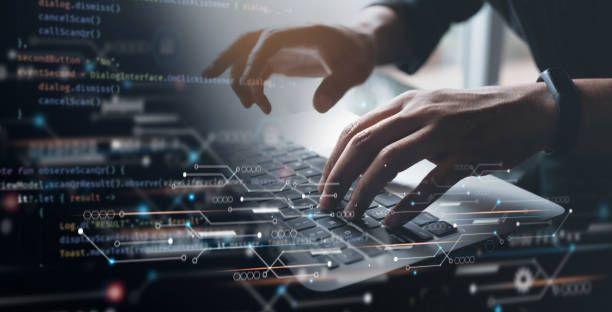There are many new and emerging technologies that are being developed and used in the field of art, including:
- Augmented reality (AR): AR is a technology that overlays digital content onto the physical world, creating an immersive and interactive experience for users. AR is being used in a variety of artistic contexts, such as installations, performances, and interactive exhibits.
- Virtual reality (VR): VR is a technology that creates a fully immersive digital environment that users can explore and interact with. VR is being used in artistic contexts to create immersive and interactive experiences that can be accessed by individuals or groups.
- 3D printing: 3D printing is a technology that allows for the creation of physical objects from digital models. 3D printing is being used in artistic contexts to create sculptures, models, and other objects that would be difficult or impossible to create using traditional manufacturing techniques.
- Artificial intelligence (AI): AI is a technology that enables machines to perform tasks that would normally require human intelligence, such as understanding natural language, recognizing objects, and making decisions. AI is being used in artistic contexts to create new forms of art, such as generative art, and to enhance traditional forms of art, such as painting and sculpture.
In the not-so-distant future, the cityscape transformed into a vibrant tapestry of colors and lights, thanks to the dynamic fusion of creativity and innovation. Artists and technologists joined forces to redefine the boundaries of artistic expression, creating a mesmerizing blend of the tangible and the virtual.
At the heart of this creative revolution was a visionary artist named Maya, known for her ability to seamlessly integrate cutting-edge technologies into her artwork. Maya’s studio, a hub of innovation, buzzed with activity as she collaborated with tech experts, engineers, and fellow artists.
One day, Maya unveiled her latest creation—an interactive mural that responded to the emotions of the people around it. The mural, adorned with luminescent patterns and augmented reality elements, came to life as viewers engaged with it. Passersby found themselves immersed in a unique sensory experience, where the boundaries between the physical and digital realms blurred.
News of Maya’s groundbreaking work spread rapidly, attracting the attention of a tech conglomerate eager to sponsor a citywide art and technology festival. The festival, named “ImagiTech,” became a celebration of the convergence of art and technology, drawing artists and innovators from around the world.

As ImagiTech unfolded, the city became a playground for creativity. Giant sculptures seamlessly integrated with virtual reality projections, and street performers used augmented reality to enhance their acts. The boundaries of traditional art forms dissolved, giving rise to an entirely new and immersive artistic experience.
Maya’s interactive mural became the centerpiece of the festival, captivating audiences with its ability to transform based on the collective emotions of the crowd. As people laughed, the colors danced with joy; in moments of reflection, the mural embraced a serene palette.
The success of ImagiTech sparked a global movement, inspiring other cities to embrace the harmonious marriage of art and technology. Museums adopted virtual reality exhibits, and public spaces transformed into dynamic canvases that responded to the pulse of the community.
Maya’s vision had not only reshaped the artistic landscape but had also ignited a spark of imagination that knew no limits. The once-separate realms of art and technology had converged into a boundless realm of endless possibilities, where the only limit was the imagination of those daring enough to explore it.
In the wake of ImagiTech’s success, a new generation of artists emerged, pushing the boundaries even further. Collaborative projects between scientists, engineers, and creatives flourished, giving rise to installations that not only captivated the senses but also addressed pressing societal issues.
One such collaboration led to the creation of “AetherScape,” a floating sculpture that harnessed renewable energy from the atmosphere to power itself. This eco-friendly masterpiece became a symbol of the potential for sustainable technology to coexist harmoniously with art, inspiring communities to embrace innovative solutions for a greener future.
The city itself underwent a metamorphosis as architects integrated smart materials into the construction of buildings. Facades became canvases for dynamic digital art displays, transforming the skyline into a living, breathing expression of the city’s collective spirit.
Education too evolved, with schools incorporating immersive technologies into the curriculum. Students explored history through virtual reality time-travel experiences, and science lessons came to life through interactive holographic simulations. The fusion of education and technology empowered a new generation to think creatively and approach problem-solving with an interdisciplinary mindset.
As the years passed, the global art and technology movement continued to evolve. Augmented reality fashion shows became the norm, where designers crafted garments that transcended the physical and transformed with a simple gesture or a change in mood. The once-static nature of traditional art galleries gave way to dynamic, ever-changing exhibitions that adapted to the preferences of each visitor.
Maya, now an icon in the art and tech community, continued to push the boundaries of creativity. Her latest project, a city-wide augmented reality scavenger hunt, engaged people in an interactive quest to discover hidden artworks scattered throughout the urban landscape. The project not only showcased the potential of augmented reality as an art medium but also fostered a sense of community and exploration.
In this brave new world, the dynamic fusion of creativity and innovation had not only redefined artistic expression but had also reshaped the way people experienced and interacted with the world around them. The future, once limited by imagination, now knew no bounds, as each innovation opened doors to new realms of possibility and inspiration. The journey of art and technology had become an ever-unfolding adventure, inviting all to explore the limitless horizons of human imagination.